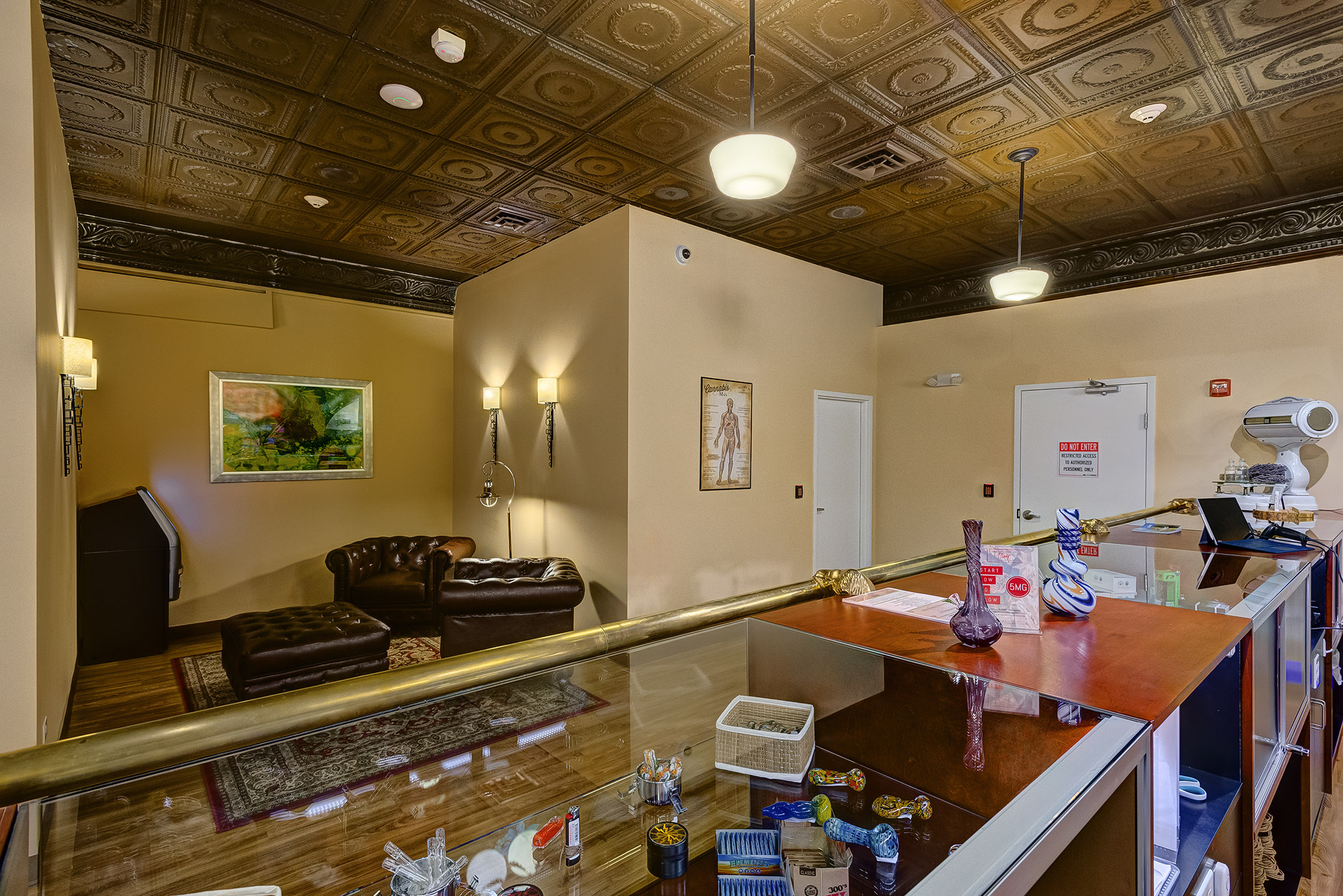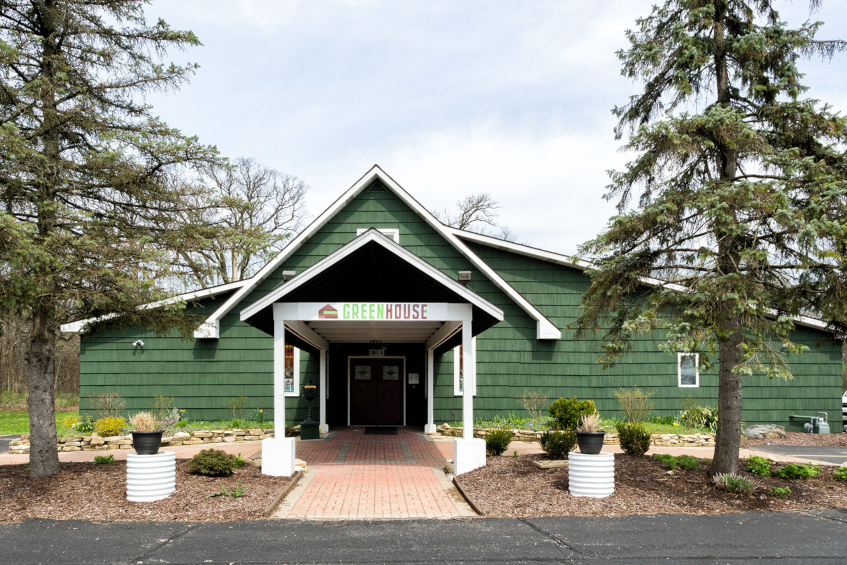Category: dispensary
Success Story Part 1: A Bar’s Origin and Journey
If a bar’s walls could talk, you could imagine the stories it would tell. The secrets, truths, tales, and a mix of all three from patrons, bartenders, cooks, and other staff remain trapped under layers of paint, trying to escape unsuccessfully through the cracks. But every now and then, there’s a special bar with a classic design, heft, and durability that embarks on an epic journey. It’s the kind of bar you see once in 125 years, about to celebrate its Quasquicentennial. It doesn’t need to rely on walls to tell stories because the bar is the story.
This bar’s story is told in four acts, beginning in the big city of Chicago in the late 19th Century and continuing down-state to this very day.

Act 1: The Origin
When you consider the bar’s roots, it makes sense that it was destined for longevity. Anheuser Busch Co. commissioned the bar in 1882, which was designed and built by Brunswick Balke-Collender. The TIMES-PRESS of Streator, IL, described it as, “…a splendid oak and brass structure with intricately carved detailing that measured 14 feet high by 30 feet long and featured 13 electrified gas lights with three sections of mirror and colonnades. The front bar had a copper foot rail and a marble base.”
Anheuser Busch was impressed enough to display the bar at The World’s Columbian Exposition in Chicago in 1893 where it resided in the company’s pavilion for the Fair’s year-long run. When the Fair concluded, sponsors of the exhibits sold displays and showpieces. A barkeep by the name of John Trapp purchased the bar and had it transported by Anheuser Busch’s famed Clydesdale horses some 100 miles away to the small industrial town of Streator and placed in his saloon, Trapp’s Tavern.
___________________________
It’s the kind of bar you see once in 125 years, about to celebrate its Quasquicentennial. It doesn’t need to rely on walls to tell stories because the bar is the story.
___________________________
Act 2: Trapped
At the time, Streator had a prolific coal and manufacturing industry and was known as a midwestern railroad hub. Business was good at Trapp’s Tavern, located on Main Street, and the new bar, fresh off it’s run at The World’s Fair, attracted many patrons. According to the TIME-PRESS, the one beer served was Anheuser Busch, and one story reports the kitchen cooked only roast beef sandwiches, while another adds navy bean and chicken noodle soups, and ham sandwiches. Every account, though, notes, “One of the pieces Trapp purchased with the bar was a ‘women’s room’, which was a 15-foot by 15-foot oak and glass walled cubicle where women sat waiting until their men had their fill in the saloon.”
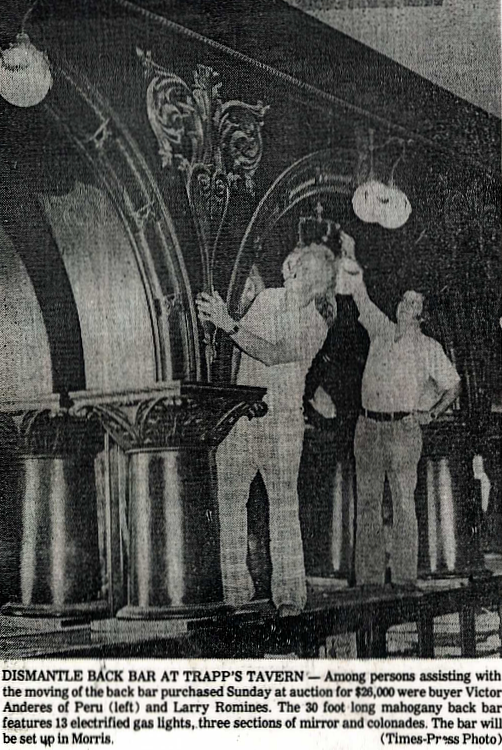
Act 3: Moving Inn
After an 82-year run, the legendary Trapp’s Tavern went out of business, but the allure of the bar grew stronger. Much like the previous century all those decades ago, a new face purchased the bar and gave it a new home. On June 27, 1976, Victor Anderes of Peru, Illinois bought the bar at auction for $26,000. Trapp’s Tavern and the renowned bar went out in style, as an estimated crowd of 200 people from as far as California, Colorado, and Florida gathered for the event. Anderes, a restaurateur, moved the bar to his new business, the Rockwell Inn in Morris, Illinois, 38 miles to the north east.
Recognized more than ever as a marvel of craftsmanship and utility, the bar was installed as the focal point of the new space. Anderes paid homage to its history, naming the room it resided in “The Columbian Exposition Lounge”, while defiantly renaming the former “Women’s Room” the “Not for Women Only” room. The bar even survived a major fire in 1985 because it was somehow shielded from the flames by the tin ceiling that collapsed on it.
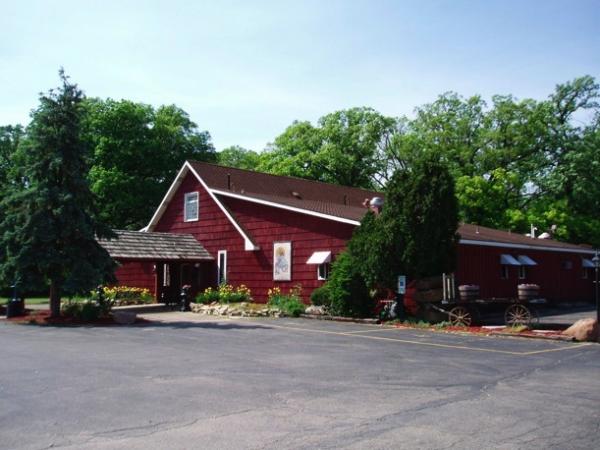
Act 4: Greener Pastures
In 2013, the Rockwell Inn shuttered its doors, presumably ending the bar’s intrastate historical journey. This time there were no post-World’s Fair buyers or auctioneers, bidders, or Clydesdales to move the bar to its new home. Finally, the bar had succumbed to its final chapter.
Or so the city of Morris thought.
The forces of change, innovation, entrepreneurship, and nostalgia are powerful enough to revitalize a relic. On August 1, 2013, Illinois enacted the Compassionate Use of Medical Cannabis Pilot Program Act. In 2014, Chicagoland-based Grassroots Cannabis launched and soon engaged Cannabis Facility Construction to design-build its new Greenhouse dispensary in Morris, using an existing space once called the Rockwell Inn. Converting an old restaurant into a medical cannabis dispensary would present many challenges, but one thing was crystal clear: that sleeping, history-weary bar would make its greatest comeback yet.
Read More: Success Story Part 2: Converting a Historical Restaurant into the Greenhouse Dispensary
References
McCullough, D. (1987) ‘World’s Fair flavor found in old bar furniture’, TIMES-PRESS, Streator, 29 July
(1983) ‘Main Street Trapp’s has long history in Streator’, TIMES-PRESS, Streator, 12 May
(1976) ‘Purchases Trapp’s Bar For $26,000’, TIMES-PRESS, Streator, 28 June
How to Safeguard Your Cannabis Business from Cyber Threats
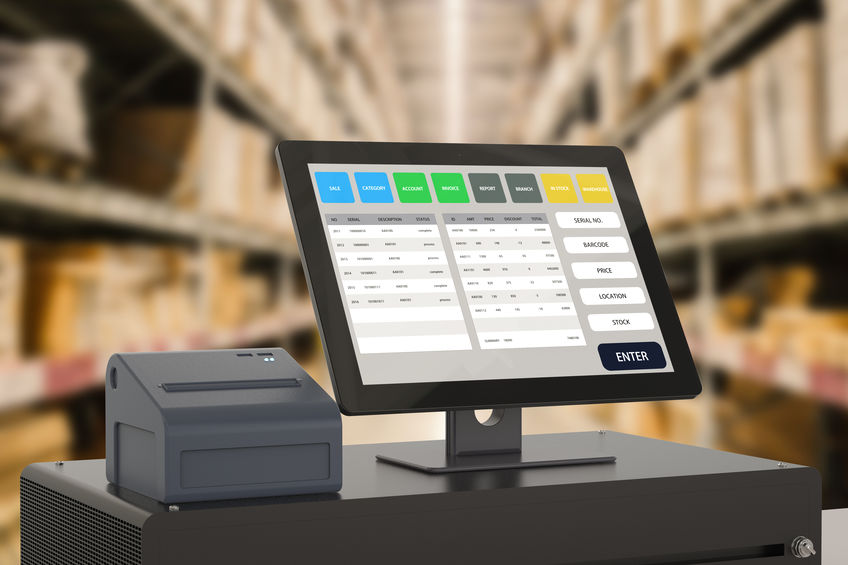 The cannabis industry had a banner year in 2018, highlighted by Canada becoming the second country to pass national legalization, the Farm Bill lifting restrictions on the commercial farming of hemp, and more states expanding their recreational and medical cannabis programs. Unfortunately, the intersection of innovation and growth has been tainted by cyber attacks. Notably, the Ontario Cannabis Store, an online retailer and wholesaler, and Denver-based software firm, MJ Freeway, experienced major data breaches. We’ve discussed security best practices for your dispensary, and now we examine how to safeguard your cannabis business from cyber threats.
The cannabis industry had a banner year in 2018, highlighted by Canada becoming the second country to pass national legalization, the Farm Bill lifting restrictions on the commercial farming of hemp, and more states expanding their recreational and medical cannabis programs. Unfortunately, the intersection of innovation and growth has been tainted by cyber attacks. Notably, the Ontario Cannabis Store, an online retailer and wholesaler, and Denver-based software firm, MJ Freeway, experienced major data breaches. We’ve discussed security best practices for your dispensary, and now we examine how to safeguard your cannabis business from cyber threats.
Have an Airtight Point of Sale System
The hardware and software combination that centralizes your business operations makes POS systems prime targets for hackers. The data stored in POS systems contain valuable and sensitive customer, employee, inventory, and operational information. Invest the time with your POS vendor to fully understand security coverage used to protect your data, their servers, and the privacy of your patients.
“There is an enormous incentive for hackers to target our young and immature industry…”
Ensure all Integrated Systems are Secure
While POS systems are one entry point for hackers and ransomware, so are the openings created by integrated systems. Cannabis businesses often use POS, Business Management, and Enterprise Resource Planning (ERP) systems together. It’s a best practice, but it also provides hackers with a low barrier of entry into your data. Protect vulnerable business data by sealing any security gaps during the integration process.
Hire an Independent Cyber Security Expert

Go all in by hiring a third party to ensure security across the board. If recent history is any indication, cannabis businesses will continue to be vulnerable to data breaches–leaking tax records, social security numbers and citizenship information–that can have devastating bottomline and reputational impacts. The right cyber security provider will not only ensure compliance, but also proactively protect your customers and investment.
Conclusion
Burgeoning cannabis businesses recognize that with great success comes great risk. In the race to ensure regulatory compliance and business growth and sustainability, protecting your operational data must be a top priority. Dr. Moe Afaneh, COO of BioTrackTHC, sums it up nicely: “Cannabis businesses are literally gold miners [sic] in the sense that their software data will define the future of this industry and their success. There is an enormous incentive for hackers to target our young and immature industry, which is why the last thing you want to do is make it easy for them.”
Oklahoma is Good for Cannabis Business

The green rush is on in the Sooner State.
Oklahoma–renowned for its once harsh possession penalties–is now a land of opportunity for medical cannabis businesses. Among the nation’s most progressive medical cannabis programs, Oklahoma has hit the ground running in only six months and is light years ahead of other states delayed by stagnating legislation.
____________________________
One of Oklahoma’s greatest differentiators is its reciprocity program that allows patients with out-of-state medical cannabis cards to qualify for renewable, temporary licenses.
____________________________
Opportunities Abound
The Oklahoma medical cannabis market could realize $250 million in annual sales in its first few years. According to the Oklahoma Medical Marijuana Authority, more than 2,200 business licenses had been issued, with an approved patient pool of more than 24,000 as of December, 2018. This speed-to-market is attributed to the fact that SQ 788 bypassed a special legislative session likely to have imposed restrictions, but instead prioritized patient-needs to get immediate access to cannabis treatments. The result is that there is no limit on business licenses, and doctors are free to recommend medical cannabis to patients for any condition they deem appropriate. In addition, the program is all-encompassing, prohibiting municipalities, cities, or counties from opting out.

High Retail & Wholesale Prices
Though there’s no cap on business licenses, supply is tight and product demand high, which is good news for dispensaries. Patients are lining up en masse for the state’s program, creating premium value for inventory. An ounce of cannabis flower, for example, averages $400, double the cost of Arizona’s medical cannabis market. Cultivation is prospering as well, with wholesale prices averaging between $3,500 – $4,500 per pound–at least twice that of competing markets.
Reciprocity Program
One of Oklahoma’s greatest differentiators is its reciprocity program that allows patients with out-of-state medical cannabis cards to qualify for renewable, temporary licenses. They cost $100, are valid for 30 days, and permit patients to purchase, use, and even grow cannabis in Oklahoma. This provision is especially enticing for Arkansan customers as a stopgap while that program ramps up.

What’s Next?
Some industry insiders caution that the possibility of over-cultivation and low prices will drive down retail and wholesale prices as it’s happened in other markets. Still, with so much success in its nascent stage and the evolution of regulations, Oklahoma may find a way to stabilize supply, increase demand, and sustain momentum.
The Advantages of Integrating Processing into Your Cannabusiness

Processing or cannabis extraction is emerging as a promising growth area for cannabis businesses, opening opportunities for vertical integration. Scientific and technological innovation are taking extraction to new heights, converting the raw material of cannabis into a cornucopia of usable forms. Christian Sweeney, Director of Science and Technology at Cannabistry Labs, which develops top-of-the-line extraction methods, identifies processing as one of the four pillars–along with cultivation, analytics and biochemistry–for developing the optimal cannabis process. It’s only natural that integrating processing into your cannabusiness has many advantages, including the following:
Self-Sufficiency
Vertical integration creates self-sufficiency for cannabis businesses and can help reduce costs. Businesses that grow, process, and sell their product may reduce their dependence on suppliers or other third parties. Colorado Springs-based Strawberry Fields, for example, makes its own products, including vape pens, edibles, and lotions. They are initially contracting with a processor until they obtain the proper equipment, which can change as they incorporate distillation into their services. Strawberry Fields budgets around $3 million annually for processing fees but will spend $200,000 on equipment to bring the function in-house.
“A well-designed cannabis process goes far beyond just extraction, overlapping heavily with cultivation on the front-end and product development on the back-end.”
Diverse Retail Opportunities

Cannabis products processed and sold onsite have the potential to become a game-changer for the industry. Similar to the farm-to-table restaurant concept, some dispensaries have added kitchens staffed with culinary personnel and food scientists, who are extracting compounds and producing edibles, oils, waxes, shatters, and more. The Mint Dispensary in Tempe, Arizona launched the country’s first full-service cannabis kitchen in October, serving the medical cannabis community. Acres Cannabis recreational dispensary in Las Vegas takes it a step further, featuring a 2,000 square foot open-view kitchen that houses its edible production and cannabis extraction operations. Customers observe the process of removing cannabinoids and terpenes from flower to create cannabis oil, and can buy the product off the shelf.
Better Quality Control
Integrating processing and cultivation at the same site can open the door for better quality control. Well-engineered facilities monitor each piece of equipment and instruments through a Building Automation System or a Direct Digital Controller. These systems provide alerts when a room or piece of equipment is not operating within the programmed specifications or range of tolerance. If both functions are located in one space, the Director of Facilities can supervise operations more efficiently.
The Bottom Line

Cannabis businesses have to keep track of many moving pieces in the name of compliance, growth, and sustainability. Integrating processing into your cannabis business can help you stay ahead, and as Sweeney notes, “A well-designed cannabis process goes far beyond just extraction, overlapping heavily with cultivation on the front-end and product development on the back-end.”
Green Wave: Cannabis is Midterm Elections Winner

While Democrats won back the House of Representatives and Republicans retained control of the Senate, there was a third winner that emerged from the midterm elections: cannabis. Four states voted on legalization and medical marijuana, and cannabis appeared on ballots in 22 cities and counties. Here are the results:
Michigan
Voters approved Proposal 1 by 56 – 44 percent to legalize, regulate, and tax cannabis for adult use. Michigan is now the 10th state to legalize cannabis for adults 21 and over, and it is the ninth state to establish a system for regulating commercial cultivation and sales for adult use. The new law, expected to be enacted this month, permits adults to possess, grow, and use small amounts of cannabis. Over the course of the next year, licensed businesses will be allowed to cultivate, process, and sell cannabis to consumers.
Missouri
Amendment 2 passed by a margin of 66 – 34 percent, making Missouri the 31st state to legalize medical cannabis. The new law allows physicians to approve patients to receive ID cards from the state, permitting them and their registered caregivers to grow up to six marijuana plants and purchase at least four ounces of cannabis from dispensaries on a monthly basis. Qualified patients and caregivers will have to until late 2019 or early 2020 before they can enter a dispensary and buy medical cannabis.
Two other measures failed: Amendment 3, which would have authorized doctors to recommend medical marijuana for a specific list of conditions, and would not have allowed home cultivation. Proposition C did not pass and would have taxed medical cannabis sales at two percent and allow recommendations for a specific list of conditions.
Utah
Proposition 2 passed by a margin of 53 – 47 percent and will go into effect on December 1, making Utah the 32nd state (after Missouri) to legalize cannabis for medicinal use. In its current form, the ballot measure allows qualified patients to purchase two ounces of medical cannabis or products containing 10 grams of cannabidiol or tetrahydrocannabinol from a dispensary during any two-week period. Patients who don’t live within 100 miles of a dispensary would be able to cultivate six cannabis plants at home and could designate caregivers to assist with the growing, obtaining and administration cannabis. Additionally, the state can issue licenses for cultivation, processing, testing, and dispensing businesses
There is a caveat: The Utah State Legislature plans to approve a compromise bill by sponsors of Proposition 2, opponents of the citizen ballot initiative, and political leaders.

North Dakota
Cannabis lost in North Dakota. Though a medical cannabis state, full legalization failed by a margin of 41 – 59 percent. One could point to the very loose restrictions included in the measure. For example, no set limit was proposed on the amount of cannabis that people could possess or cultivate. The state would permit production and sales but would have to create its own rules and regulations for the industry a legislative session down the road. The measure also called for automatically expunging convictions for marijuana offenses.
Local Level
Cannabis saw gains on the local level. In Ohio, voters passed local decriminalization initiatives in five of six cities. Voters in 16 counties and two cities in Wisconsin were asked non-binding, cannabis advisory questions. The results: At least 14 counties have approved cannabis advisory referendums in support of various legalization and decriminalization policies.
Check out our other 2018 election post New Governors See a Bright Future for Cannabis.
Four Ways to Keep Your Dispensary Safe Without Scaring Off Customers
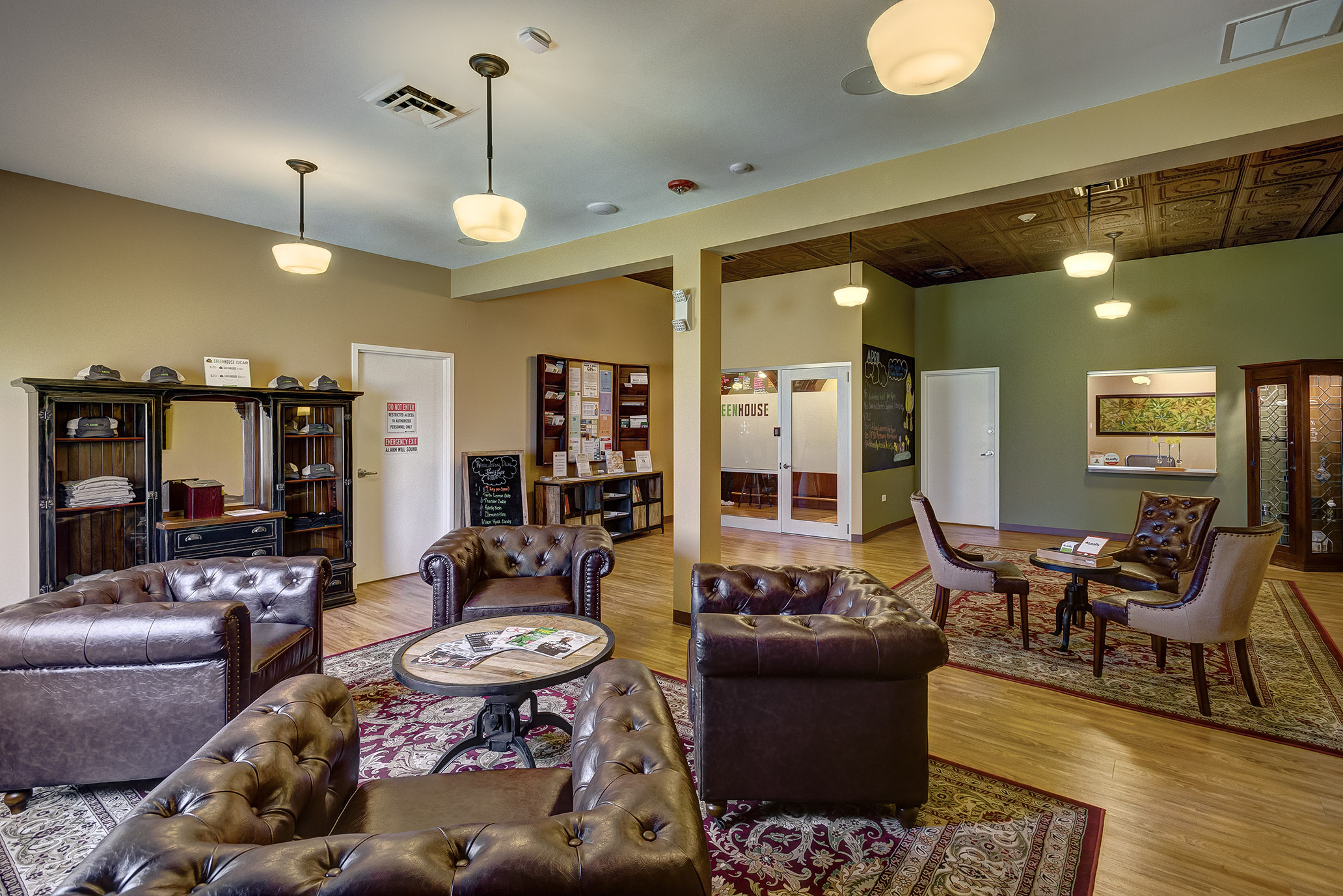
During the Q&A session at a recent cannabis conference event, an audience member described her experience visiting a dispensary in Palm Springs. It felt daunting and uncomfortable, she said. There were several layers of obtrusive security, including multiple armed guards, and customers could only enter single file and one-at-a-time. You were buzzed into the entrance, waiting area, product room, and then upon exit. More than anything, she felt tense and as though she were doing something wrong.
There’s a fine line between security and customer comfort. In a predominantly cash-only business, protecting your staff, customers, and assets is paramount, but so is creating a positive customer experience. The good news is that you can have it both ways. Follow our recommendations from on how to keep your dispensary safe without scaring off customers:
Show That You’re Serious About Security
Dispensary-burglary is a primary safety concern for cannabis consumers. As dispensary owners, you can make your security presence known without it being in the customer’s face. Customers are there to shop, but they want protection, too. Be open about your security system by hiring security guards, posting visible signage, installing cameras at eye-level, and detailing your security protocols on your website.
Describe the Store Layout at Reception
Customers want to know what they’re walking into, so tell them. Whether they’re first-time or repeat customers, understanding the lay of the retail land can strengthen the customer journey. Train reception staff to provide customers with an overview of each part of the dispensary: explain the store layout and what they can expect to find in each space from the reception and waiting areas to the different sections of the shop. This is also a good time to note what security measures are in place. Remind customers that there is video surveillance and onsite security staff.

Ensure Your Security Staff is Customer-Friendly
Mountains of cash move in and out of dispensaries, and armed guards are often employed to stand watch and protect staff and customers. Security personnel carrying firearms can be intimidating. The last thing you want is for the first point of customer contact to obstruct the point of sale. Evan Hicks, Marketing Coordinator for Senseon Secure Access, a product of Accuride International, notes, “Because of marijuana’s history and, still, the stigma that exists in many communities, seeing a security guard can make customers feel skittish or even avoid coming in entirely…Many businesses opt for plain-clothes guards or guards with uniforms that mimic the rest of the in-store team.” Work with security to understand customer engagement, so they help create an inviting environment that also conveys to customers that safety is a top priority.
Make Your Space Visually Appealing
A dispensary that feels like a maximum security penitentiary, like the one described above, will not inspire loyal customers. The right design-build is critical and can make all the difference for customers to feel welcomed and relaxed. The Greenhouse in Morris, Illinois and Caliva in San Jose, California are great examples. A former restaurant remodeled into a dispensary, the Greenhouse features a reclaimed, 150-year-old bar that serves as the centerpiece of an open and comfortable space where visitors interact with budtenders and learn about the products. At Caliva (Business Insider’s Top Rated Dispensary, 2016), there is no bulletproof glass between customers and staff in the entrance, and the shop itself is designed with earthy tones and natural wood paneling.
The Bottom Line
Security weighs heavily on dispensary owners. They are tasked with meeting federal, state, and local security compliance requirements, while protecting all elements of their retail operations. Balancing safety and customer-engagement is challenging but can be achieved utilizing the best practices listed above.
Surfing the Wave of the Cannabis Boom
Four years ago, Mosaic Construction entered a new vertical in construction as we jumped feet first into the cannabis industry as a result of one of our loyal client asking for our help. Mosaic had previously built retail spaces and when we were approached to complete three design/build projects for their cannabis dispensaries in Illinois, we learned very quickly how fast the market was growing (pun intended!)
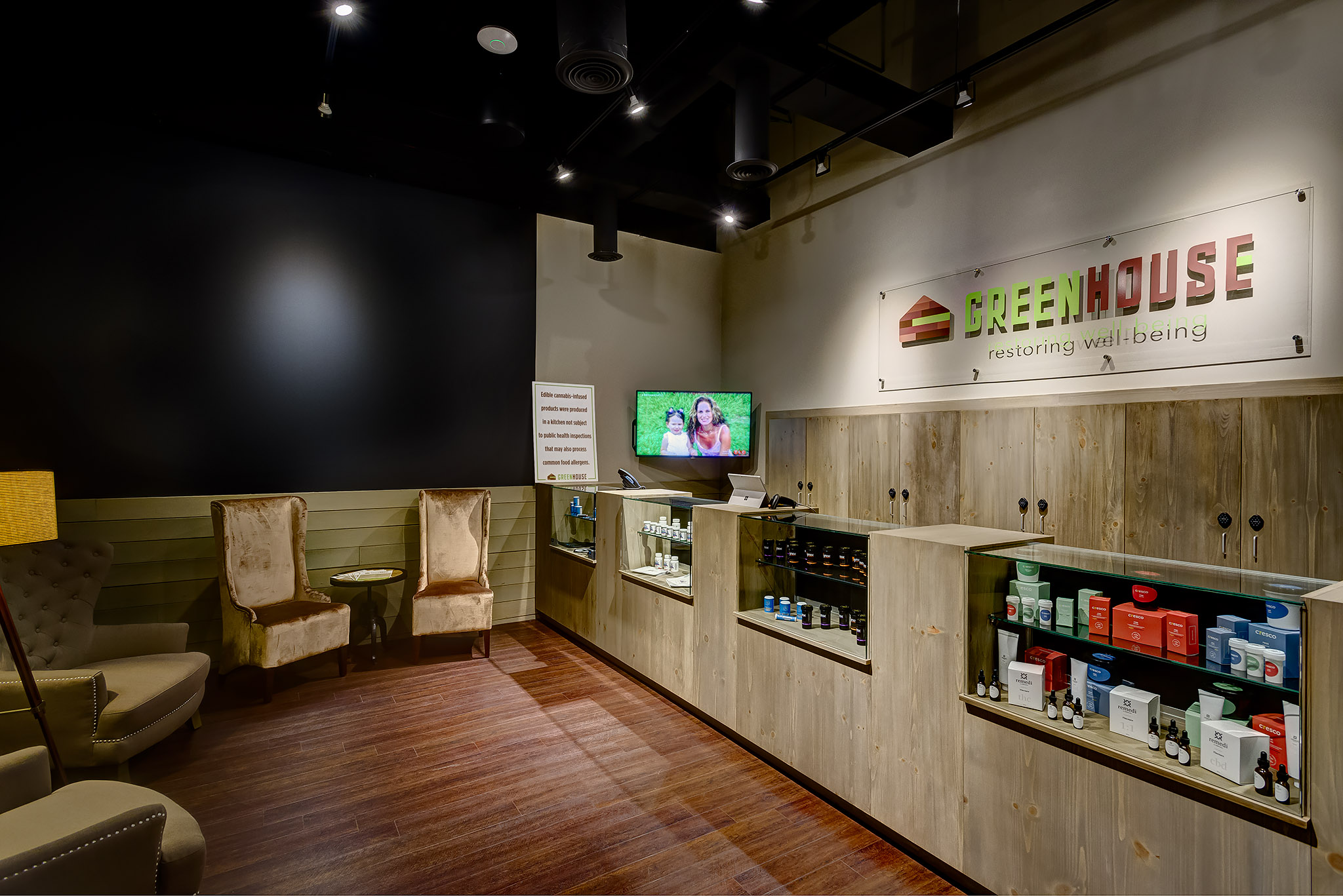
Cannabis Facility Construction was created to brand our efforts in the cannabis industry. We have grown to a nation-wide, industry leading design/build construction company. We have worked with design professionals to create unique spaces for our cannabis clients and have completed twelve Dispensary, Cultivation and/or Processing projects in six states totaling over 140,000 square feet. We have a loyal client base and have expanded our reach and talents within the cannabis industry to provide quality and highly functional facilities within this booming sector.

We are proud, sponsoring members of the National Cannabis Industry Association which represents nearly 2,000 member-businesses and tens-of-thousands of cannabis professionals. NCIA promotes the growth of a responsible and legitimate cannabis industry where they believe “Our industry is stronger, smarter, and more prosperous when we work together.” Recently, we attended the Midwest Quarterly Cannabis Caucus which is the premier B2B event series for making meaningful connections with the cannabis industry’s leading executives and policymakers while also getting the tools we need to advance the cannabis industry nationally. Recently, we spent a few days in Anaheim, CA at the California Cannabis Business Conference, the only industry association trade show preparing California cannabis businesses for success in the largest adult-use market in the world. The California Cannabis Business Conference unifies the Golden State and brought together seasoned industry leaders to convene on best business practices and operations.

Later next month, the Cannabis Facility Construction team will attend the MJBiz convention in Las Vegas. This event is the preeminent conference to drive business deals and forge valuable connections with cannabis professionals in business today. There will be over 20,000+ cannabis professionals and 1,000+ exhibitors attending. It is the networking event for anyone serious about networking in the cannabis industry.
To learn more about Cannabis Facility Construction, check out www.cannabisfacility.net.

